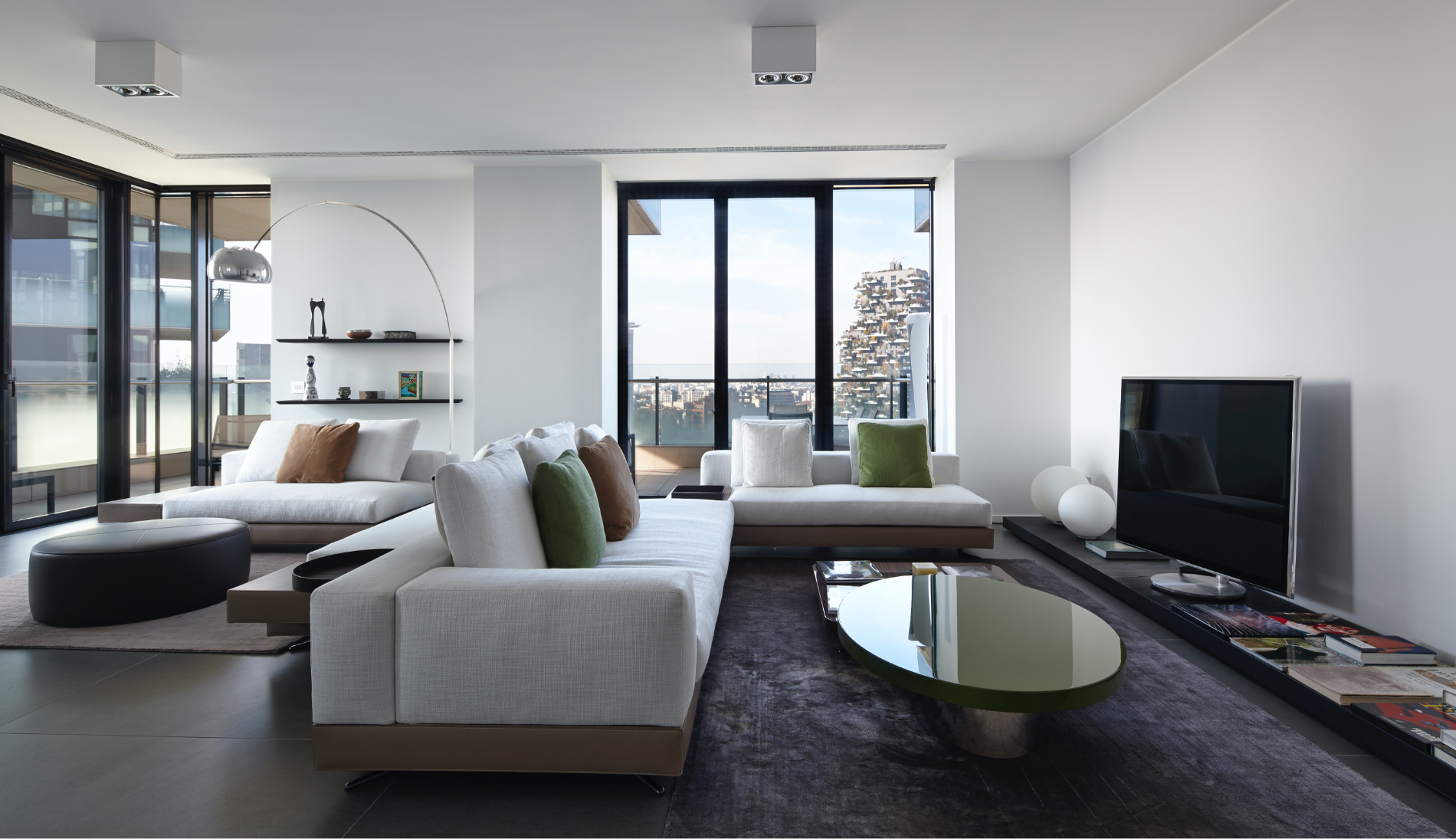

He also restored many of the buildings that his grandfather had worked on, such as the Casa degli Atellani (dal 1993), Villa Campiglio (2002-2008) and Bicocca degli Arcimboldi (1994-1996), all in Milan.

Moritz, such as Le Fontanelle in Montalcino (1990) and Suvretta chalet (2003), as well as numerous boat and yacht interiors.

He worked on city apartments, one of his first projects being an apartment for himself and his wife Patrizia in Via Saffi, Milano (1969), holiday houses in Porto Rotondo, the Tuscan countryside and St. Piero Castellini (1938) specialised in luxury interior design for the upper classes, progressively developing a taste for decoration, for the objet-trouvé, for new combinations of finely handcrafted items. Piero Portaluppi (1888-1967) worked on projects ranging from the upper-class interiors of Villa Campiglio in Milan (1932-1935) and Villa Crespi in Merate (1935-1938), where he experimented with new uses for prestigious materials, to the visions of the Villa for eight couples in Val Formazza (1930) and the Saturday House for the bride and bridegroom at the Fifth Triennale di Milano (with BBPR, 1932-1933).
#INTERNI DESIGN FREE#
In this space, architect Portaluppi gives free reign to his most extreme visions interior designer Piero Castellini’s work often spills over into the realm of design and Nicolò Castellini takes the complex art of decoration to its most extreme consequences. At SpazioFMG the three approaches are compared and contrasted in a rich history woven together out of texts, images, drawings, objects, fabrics and more”.ĭeveloped in collaboration with Fondazione Piero Portaluppi, the exhibition “ FROM PORTALUPPI TO CASTELLINI” looks at the role of interior architecture as an evolving field of design, using the home as a terrain for experimentation and a site of research. The three figures featured in the exhibition, though very different from one another in their fields of study and attitudes to design, share an eclectic background and a vision of the interior as a place for anti-ideological free expression. They all share a natural propensity for eclecticism and interpretation of the domestic interior as a place of freedom and experimentation.

“Piero Portaluppi, Piero Castellini and Nicolò Castellini address the theme of interior design on the basis of very different and often complementary sensibilities and attitudes. Luca Molinari, curator and scientific director at SpazioFMG, introduces the new exhibition: Three generations of projects tell the story of a century of Italian architecture, styles and lifestyles in a wide-ranging itinerary of upper middle-class Italian homes throughout the twentieth century and up to the present day.
#INTERNI DESIGN SERIES#
SpazioFMG per l’Architettura continues the series of exhibitions begun in 2014 focusing on Italy’s great tradition of interior design, reflecting once again on the theme of the home and living as an essential, highly relevant focus of study in contemporary architecture.Īfter hosting interesting design studios from all over Italy in its past shows, at 18:30 on March 3 SpazioFMG, the gallery and showroom operated by the FMG Fabbrica Marmi e Graniti and Iris Ceramica brands, renews its format with an exhibition on the famous Portaluppi – Castellini family of designers in Milan. The exhibition focuses on the careers of three designers, Piero Portaluppi, Piero Castellini and Nicolò Castellini: three generations of the same family concerned with interior architecture. In the wake of the success of previous editions, SpazioFMG ushers in the 2016 season with the third event in the ITALIA per INTERNI series. To make an appointment: (for groups of at least 5 people) write to Paolo Schianchi.


 0 kommentar(er)
0 kommentar(er)
